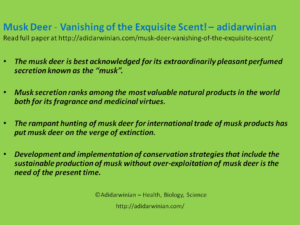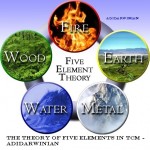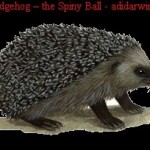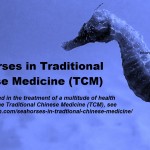This paper discusses the threatened condition of musk deer with focus on taxonomy of musk deer, distribution of musk deer, production of musk, uses of musk both as a perfume and medicine, trade of musk, and conservation status of musk deer. The author of this paper aims to emphasize the exquisiteness of the musk secretion both as a perfume and medicine, and hence, the need to save the musk deer from getting extinct.
The musk deer is best acknowledged for its extraordinarily pleasant perfumed secretion known as the musk. This secretion ranks among the most valuable natural products in the world both for its fragrance and medicinal virtues, and has played the most important role in the decline of the population of musk deer on this planet. The rampant hunting of musk deer for international trade of musk products has resulted in the vanishing of the exquisite scent at an accelerated rate.
Taxonomy / Classification of Musk Deer
Musk deer are deer-like animals belonging to the family Moschidae of the order Artiodactyla under the class Mammalia. The following species of musk deer (genus – Moschus) have been recognized, viz. –
Moschus moschiferus – It is also known as Siberian musk deer or Taiga musk deer.
M. berezovskii – It is also known as Forest musk deer, Chinese Forest musk deer, South China Forest musk deer, or Dwarf musk deer.
M. chrysogaster – It is also known as Alpine musk deer.
M. leucogaster – It is also recognized by the name of Himalayan musk deer.
M. cupreus – It is also recognized by the name of Kashmir musk deer.
M. anhuiensis – Moschus anhuiensis is also known as Anhui musk deer.
M. fuscus – Moschus fuscus is also recognized by the name of Black musk deer or Dusky musk deer.
Distribution of Musk deer
M. moschiferus is distributed in the following regions: Russian Federation, Kazakhstan, China, Mongolia, and Korea. In Russia, 4 subspecies of Moschus moschiferus are found – M. m. moschiferus in Siberia, M. m. turovi in Russian Far East, M. m. arcticus in Verkhoyansk Ridge (Verkhoyansk mountains of the Sakha / Yakutia Republic of Russia), and M. m. sachalinensis in Sakhalin Island (a Russian island located off the eastern coast of Russia, north of the Hokkaido island of Japan). In Mongolia, M. m. moschiferus is found in the mountain ranges of northern Mongol Altai, Hangai, Hentii and Hövsgöl. In China, M. m. moschiferus is found in Xinjiang (Altai mountains), Nei Mongol (Inner Mongolia Autonomous Region), and Heilongjiang (a province in the northeastern China). In China, M. m. parvipes (a subspecies of Moschus moschiferus) is found in the mountain ranges of Lesser Xing’an and Changbai, extending westwards to Ordos Plateau.
Moschus berezovskii is found in the central and southern parts of China, extends to the eastern Himalayas and northeastern Vietnam, and possibly, northern Lao PDR (Lao PDR is a country bordering China, Myanmar / Burma, Cambodia, Thailand, and Vietnam).
Moschus chrysogaster extends from the highlands of central China, south and west to the Himalayas, to eastern Nepal, Bhutan, and northeastern India.
Moschus leucogaster is found in the Himalayan mountain range. It is found in the regions of northern India (including Sikkim), Nepal, Bhutan, and China (southwest Xizang).
Moschus cupreus is found in the Himalayan mountain range of northern India and Pakistan in Kashmir, and in Afghanistan.
Moschus anhuiensis is found only in and around the Dabie mountain range in China.
Moschus fuscus occurs in northwestern Yunnan (a province in the northeastern China), southeastern Tibet, northern Myanmar / Burma, Arunachal Pradesh (northeastern India), eastern Nepal, and Bhutan.
Exquisite Scent – The Production of Musk
The word “musk” has been derived from the Sanskrit term “Muska”, which means “testicles”. This term, in case of musk deer, actually implies to the walnut-size musk sac located close to the genitals of the male musk deer. The musk sac / musk gland / pod / scent gland secretes the aromatic secretion known as the musk. Musk sac occurs in the preputial region (region pertaining to prepuce) of the male musk deer between the abdomen and genitals. Musk sac opens via a duct just a few millimetres anterior to the opening of the urethra.
Male musk deer secrete the musk deer perfume (musk) from an age of 1 to 1.5 year onwards. Most of the amount of musk is secreted by these animals in the age group of three to eight years. Most of the musk production occurs in the months of May to July. The yellow, milky musk secretion drains via ducts into the neck of the musk sac. Over a period of one month or more, this initial secretion gets mixed with slough from the inner wall of the musk sac and ripens into a highly scented, red-brown substance.
Traditionally, the musk deer are killed so that the musk gland or pod can be easily removed. Either a whole pod or the granular red-brown material obtained from it (musk grain), may be used in musk trade. Musk can also be extracted via the external orifice of the musk sac without killing the animal.
Exquisite Scent – The Uses of Musk
For thousands of years, musk has been used as a medicine (in oriental medicine) and perfume. Musk acts both as a perfume and fixative, therefore, musk is used also as a fixative for other fragrances. The musk scent surpasses in its intensity and persistence the aroma from most of the other similar-smelling animal and plant products. Muscone and muscopyridine constitute the main components of the musk scent.
Musk is one of the most frequently used animal products in the Traditional East Asian Medicine (TEAM), and is used in the treatment of a variety of ailments. It is employed as a sedative for the disorders of the nervous system, heart stimulant, enhancer of sex drive (libido), nerve stimulant, respiratory stimulant, etc. The Arab doctors introduced musk into the western medicine. Musk is used as an ingredient of many patent oriental medicines in the USA. Hundreds of pharmaceutical formulations used in the traditional systems of medicine including Chinese medicine, Ayurveda (traditional system of Indian medicine), and Korean medicine contain musk as one of the ingredients.
Due to the increasing insufficiency in the supply of musk, discouragement of its use from the governments, high cost, and availability of cheaper synthetic alternatives, the use of musk in perfume industry has declined drastically in the present times. Currently, the most important market for musk products is in Traditional Chinese Medicine (TCM), Ayurvedic medicine (see, What exactly is Ayurveda?), and Unani medicine.
Musk is also employed in Homeopathy (see, What is Homeopathy?). John Henry Clarke (famous British homeopath) in his “A Dictionary of Practical Materia Medica” gives the following clinical indications for musk – Angina pectoris, Catalepsy, Croup (see, What is Croup?), Diabetes, Dyspnea (difficult / labored breathing), Epilepsy, Fainting, Fits of rage, Heart failure, Herpes – mercurial and venereal, Hiccup (hiccough or singultus), Hypochondriasis, Hysteria, Hystero-epilepsy, Impotence, Laryngismus (spasm of the larynx), Paralysis of lungs, Pregnancy problems, Stings, Typhoid, Vertigo, and Pertussis (whooping cough). The homeopathic pharmaceutical industry makes use of very less amount of musk in comparison to other systems of complementary and alternative medicine (CAM).
Exquisite Scent – The Trade of Musk
Musk is considered to be one of the most expensive products of animal origin in the world. In the 1990s, the monetary worth of musk in the European market was 3 to 5 times its weight in gold. During the 1970s, the value of musk in the international market was hiked up to forty-five thousands of US dollars per kg. To acknowledge the level of international trade in musk, it is important to state that the production of musk in China was 2 to 2.5 tonnes per year during the early 1980s. According to the annual report of Convention on International Trade in Endangered Species of Wild Fauna and Flora (CITES), 42 countries were reported to import products containing musk during 1978 to 1996.
The present state of international musk trade can be well estimated from the continuous decline in the population of musk deer in their range of geographical distribution. The very high value of musk in the international market acts as an incentive for poachers in continued hunting of musk deer. High levels of both legal and illegal trade in musk products have put musk deer under tremendous threat of extinction.
Conservation Status of Musk Deer
The widespread hunting of the musk deer for its musk has resulted in striking decline in its population. Another factor contributing to the decline in the population of musk deer is the destruction of their natural habitats due to human activities. Destruction of the natural habitats results in scarcity of food for musk deer, and also, makes them more vulnerable to predators and poachers.
Since 1979, musk deer have been included in the Appendices of the Convention on International Trade in Endangered Species of Wild Fauna and Flora (CITES). CITES, an international agreement between the governments of countries around the globe, aims to ensure that the international trade in specimens of wild animals and plants does not threaten their survival. All species of the musk deer have been categorized as threatened in the IUCN Red List (see, What is the IUCN Red List?).
The IUCN Red List Categories for Species of Musk Deer
Endangered – M. chrysogaster, Moschus berezovskii, Moschus leucogaster, Moschus cupreus, Moschus anhuiensis, Moschus fuscus
Vulnerable – Moschus moschiferus
Development and implementation of conservation strategies that include the sustainable production of musk without over-exploitation of musk deer is the need of the present time.







Poachers of Musk deer should be heavily punished.
Very nice information. This article shows the real need to save the musk deer before it’s too late.
Really great article shedding light on the importance and conservation of musk deer.